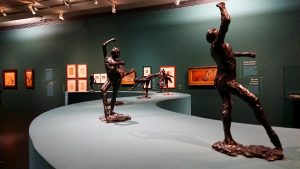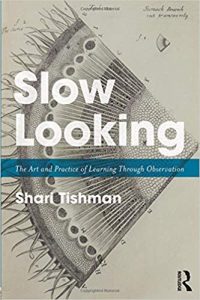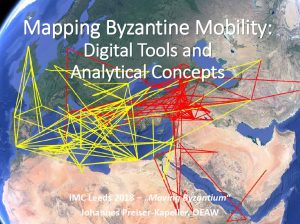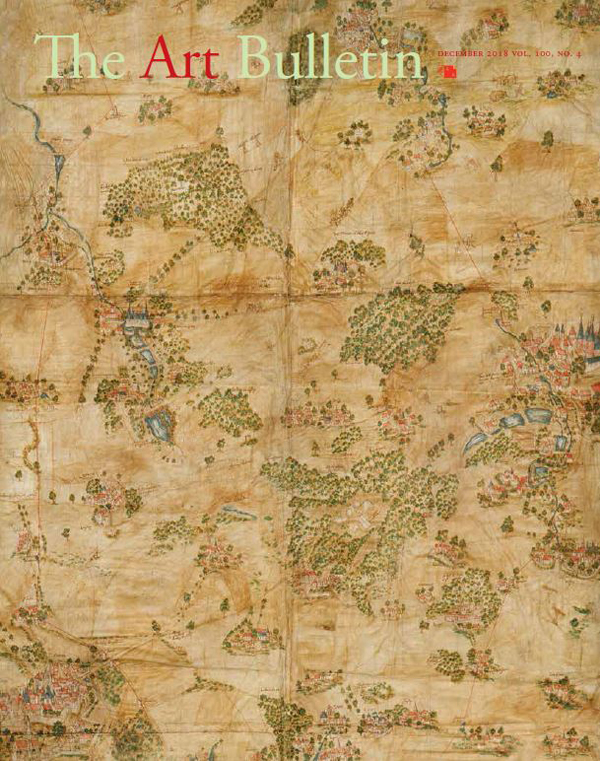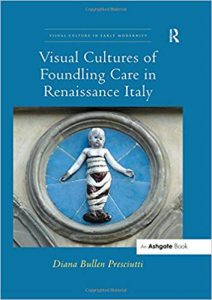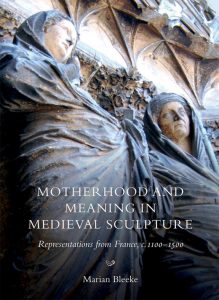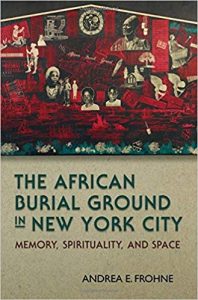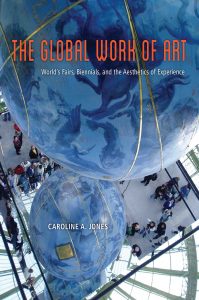CAA News Today
New in caa.reviews
posted by CAA — December 21, 2018
Kathryn Brown reviews Degas Danse Dessin: Hommage à Degas avec Paul Valéry, edited by Leïla Jarbouai and Marine Kisiel, and Degas: A Passion for Perfection, edited by Jane Munro. Read the full review at caa.reviews.
Clare Kunny writes about Slow Looking: The Art and Practice of Learning Through Observation by Shari Tishman. Read the full review at caa.reviews.
News from the Art and Academic Worlds
posted by CAA — December 19, 2018
Want articles like these in your inbox? Sign up: collegeart.org/newsletter
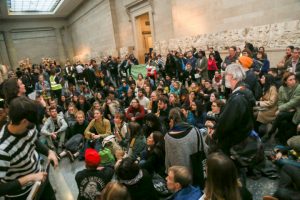
Hundreds gather in the atrium of the British Museum for an unofficial “Stolen Goods Tour.” Photo by and courtesy of Diana More, via Hyperallergic
National Gallery of Art Chooses First Female Director
Kaywin Feldman, of the Minneapolis Institute of Art, will be the first woman to hold the job in the museum’s 77-year history. (New York Times)
Here Are the 10 Female Artists Over 40 Who Have Won 2018’s $250,000 Anonymous Was a Woman Awards
The awards’ founder, Susan Unterberg, only revealed her identity earlier this year. (artnet News)
Influencers in Higher Education in 2018
See Chronicle‘s list of the people who shaped higher ed (for better or worse) in 2018. (Chronicle of Higher Education)
How-To: Students of Islamic Art Wikipedia Edit-a-thon
Explore a thread by UT Austin professor Dr. Stephennie Mulder on how to use a Wikipedia edit-a-thon to teach art history. (Twitter)
How Artists Can Master Dealing with Rejection
Straightforward tips for artists—and everyone, really—to deal with an inevitable part of the creative process. (Artsy)
Hundreds Attend Guerrilla, Activist-Led Tour of Looted Artifacts at the British Museum
The tour featured talks by activists of Australian Aboriginal, Iraqi, Hawaiian, Māori, and Greek Cypriot heritage. (Hyperallergic)
Member Spotlight: Renata Holod
posted by CAA — December 18, 2018
Renata Holod is College of Women Class of 1963 Term Professor in the Humanities, at the History of Art Department, and Curator, Near East Section, Museum of Archaeology and Anthropology, at the University of Pennsylvania. She has carried out archaeological and architectural fieldwork in Syria, Iran, Morocco, Turkey, Central Asia, Tunisia, and Ukraine, and is the author of numerous books and essays.
CAA media and content manager Joelle Te Paske corresponded recently with Professor Holod to learn more about what she’s working on.

Joelle Te Paske: Thank you for taking the time, Professor. So to begin, where are you from originally?
Renata Holod: I was born in Ukraine, and grew up in Edmonton, Alberta and then Toronto, Ontario, Canada.
I have a BA in Islamic Studies from the University of Toronto; a MA from University of Michigan in the History of Art, and my PhD from Harvard in Fine Arts.
JTP: What led you to the work you do now?
RH: My work on projects varies in date and methodology, from archaeology (I worked in Syria, and Tunisia), to architectural and regional history of different periods and locations (including fourteenth- to fifteenth-century architecture, settings and cities in greater Iran, and contemporary architecture from Morocco to Indonesia), to work on objects and collections (ceramics, the late Ottoman painter Osman Hamdi Bey). I get bored quickly.
JTP: You’ve been a CAA member for over 40 years. How has the field changed?
RH: There are many more practitioners in my particular field. In fact, it is no longer one field, but could be divided into regional and temporal sub-fields. There is much more theorization, and also expanded archival work (e.g. Ottoman archives), and now digital humanities, etc.
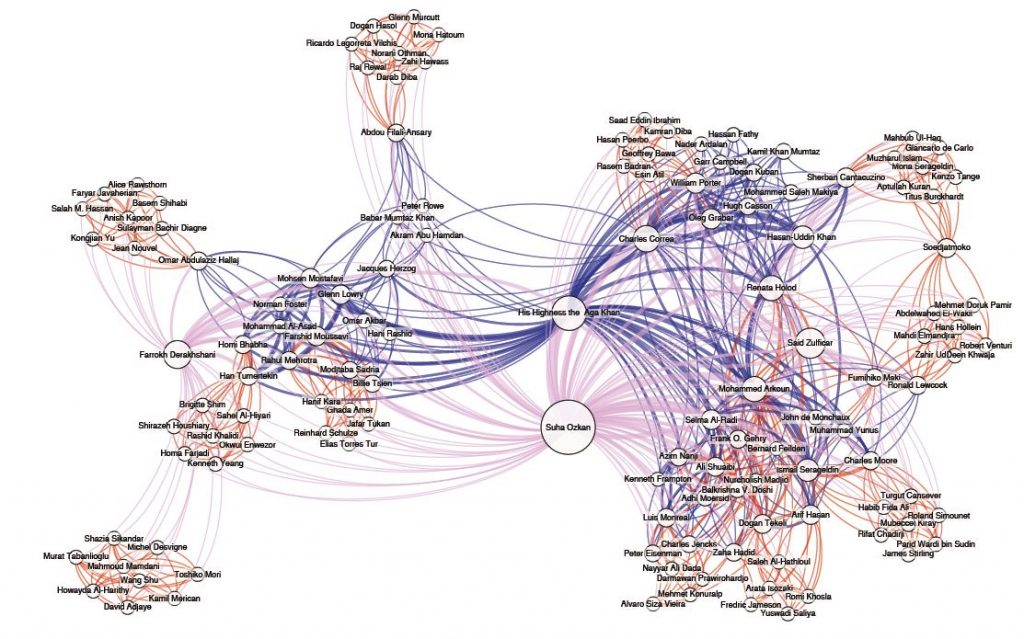
JTP: What is the most exciting part of your work currently?
RH: Studying unpublished objects, and redoing the galleries and publishing the Middle East collection for the later periods (Parthian through the nineteenth century) at the Penn Museum.
JTP: A favorite exhibition or study you’ve worked on over the years?
RH: Whichever one is currently being submitted.
JTP: What is your top recommendation for our readers?
RH: Network Theory and its application; see the work of my former student, Yael Rice on Mughal workshops, as well as the work of Johannes Preiser-Kappeler (Vienna).
JTP: What is a favorite memory from a CAA conference?
RH: Seeing my former students give papers; and meeting my former classmates.
JTP: Thank you, Professor Holod.
Renata Holod is College of Women Class of 1963 Term Professor in the Humanities, at the History of Art Department, and Curator, Near East Section, Museum of Archaeology and Anthropology, at the University of Pennsylvania. She has carried out archaeological and architectural fieldwork in Syria, Iran, Morocco, Turkey, Central Asia, Tunisia, and Ukraine. She is co-author of City in the Desert: Qasr al- Hayr East (1978); Architecture and Community: Building in the Islamic World Today (1983); The Mosque and the Modern World (1997); The City in the Islamic World (2008) and An Island Through Time: Jerba Studies (2009). She was recently part of the team redoing the Middle East galleries at the Penn Museum, with a special issue of Expedition magazine and a new handbook as well. Her most recent articles are: “Approaching the Mosque: Birth and Evolution” in The World of the Mosque: Magnificent Designs (New York: Rizzoli, 2017) 14-21, and “Jerba in the 3rd/9th century CE: Under Aghlabi Control?” in The Aghlabids & their Neighbors: Art & Material Culture in Ninth-Century North Africa, Glaire D. Anderson, Corisande Fenwick, and Mariam Rosser-Owen, eds. (Leiden: Brill, HdO series, 2017), 451- 469. On several international advisory and editorial boards, she has also served as President, Board of Trustees at The Ukrainian Museum in NYC, 2013-2017.
Explore the Latest Issue of The Art Bulletin
posted by CAA — December 18, 2018
Print copies of The Art Bulletin will arrive in mailboxes soon. Click here to explore the digital version.
TABLE OF CONTENTS
EDITOR’S NOTE
Owning, Claiming, and Representing Land
Nina Athanassoglou-Kallmyer
ARTICLES
Mastering the Landscape: Geometric Survey in Sixteenth-Century France
Anthony Gerbino
Shifting Panoramas: Contested Visions of Cuzco’s 1650 Earthquake
Patrick Thomas Hajovsky
Landscape and Iconicity: Proskynetaria of the Holy Land from the Ottoman Period
Pnina Arad
Entertaining War: Spectacle and the Great “Capture of Wuhan” Battle Panorama of 1939
Kari Shepherdson-Scott
REVIEWS
Olga Bush, Reframing the Alhambra: Architecture, Poetry, Textiles and Court Ceremonial
Patricia Blessing
Jennifer Raab, Frederic Church: The Art and Science of Detail
Katherine Manthorne
Not a member? Click here to join CAA and explore the issue in full.
Editor-in-Chief Sought for Art Journal Open
posted by CAA — December 17, 2018
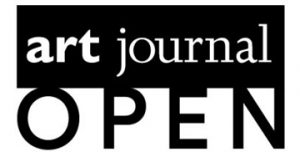
The Art Journal Editorial Board invites nominations and self-nominations for the position of editor-in-chief of Art Journal Open for the term of July 1, 2020–June 30, 2023 (with service as incoming editor designate, July 1, 2019–June 30, 2020). A candidate may be an artist, art historian, critic, educator, curator, or other professional within the membership served by CAA; institutional affiliation is not required. Art Journal Open is an online forum for the visual arts that presents artists’ projects, conversations and interviews, scholarly essays, and other content from across the cultural field. The independently edited journal publishes original material by artists, scholars, teachers, archivists, curators, critics, and other cultural producers and commentators, with a commitment to foster new intellectual exchanges about contemporary art and culture. Art Journal Open prioritizes material that makes meaningful use of the web, such as multimedia formats and techniques, and is published on a continual, rolling basis.
The editor is responsible for commissioning all content for Art Journal Open. He or she solicits or commissions projects, texts, and time-based content by artists and other authors, and determines the appropriate scope and format of each project. Working in consultation with the Art Journal editor-in-chief, reviews editor, and editorial board, the editor determines which pieces should undergo peer review and subsequent revision before acceptance. The editor also works with authors and a CAA staff editor on the development and preparation of materials for publication. The editorial board expects that a significant portion of the journal will be geared to work or concerns of artists, and that the editor will endeavor to give voice to underrepresented perspectives. Qualifications for the position include a broad knowledge of current art, the ability to work closely with artists in a wide variety of practices, and experience in developing written and other content for arts platforms. The position includes membership on the editorial board and, after the orientation period, an annual honorarium, paid quarterly for the three years the of the editorship. The editor attends the three meetings each year of the Art Journal Editorial Board and, as an ex-officio member, of the Publications Committee—held in New York or by teleconference in the spring and fall, and at the CAA Annual Conference in February—and submits an annual report to CAA’s Board of Directors.
Candidates must be current CAA members and should not serve concurrently on the editorial board of a competitive journal or on another CAA editorial board or committee. The editor-in-chief may not publish her or his own work on Art Journal Open or in Art Journal during the term of service. Nominators should ascertain a nominee’s willingness to serve before submitting a name; self-nominations are also welcome. Please send a letter describing your interest in and qualifications for the position, a CV, and at least one letter of recommendation to: Art Journal Open Editor Search, CAA, 50 Broadway, 21st floor, New York, NY 10004; or email the documents to Heather Holmes (hholmes@collegeart.org), CAA Associate Editor for Digital Publications.
Deadline: April 1, 2019; finalists will be interviewed on May 2 in New York.
Chelsea Farrar and Heidi Herboldsheimer
posted by CAA — December 17, 2018
The weekly CAA Conversations Podcast continues the vibrant discussions initiated at our Annual Conference. Listen in each week as educators explore arts and pedagogy, tackling everything from the day-to-day grind to the big, universal questions of the field.
CAA podcasts are now on iTunes. Click here to subscribe.
This week, Chelsea Farrar and Heidi Herboldsheimer discuss Red for Ed, a grassroots movement started by parents and teachers as a way to stand up for public education.
Chelsea Farrar is Curator of Community Engagement at the University of Arizona Museum of Art.
Heidi Herboldsheimer has been teaching middle school in Arizona for seven years.
New in caa.reviews
posted by CAA — December 14, 2018
Jean K. Cadogan reviews Visual Cultures of Foundling Care in Renaissance Italy by Diana Bullen Presciutti. Read the full review at caa.reviews.
Julia Perratore discusses Motherhood and Meaning in Medieval Sculpture: Representations from France, c. 1100–1500 by Marian Bleeke. Read the full review at caa.reviews.
Eden Osucha writes about The African Burial Ground in New York City: Memory, Spirituality, and Space by Andrea E. Frohne. Read the full review at caa.reviews.
Andrew S. Weiner explores The Global Work of Art: World’s Fairs, Biennials, and the Aesthetics of Experience by Caroline A. Jones. Read the full review at caa.reviews.
News from the Art and Academic Worlds
posted by CAA — December 12, 2018
Want articles like these in your inbox? Sign up: collegeart.org/newsletter

Charlotte Prodger, Turner Prize 2018 Winner at Tate Britain © Tate Photography, Jordan Anderson, via The Art Newspaper
‘I Wouldn’t Be Here Were It Not for Public Funding’: Turner Prize-Winner Charlotte Prodger Makes Case for State Support for the Arts
The Glasgow-based artist won the top British art prize for videos that meld Scottish landscapes and queer identity. (The Art Newspaper)
New Gallery Will Be First in a Smithsonian Museum to Focus on US Latino Experience
The Smithsonian will open its first permanent gallery space for Latinx culture in 2021. (Washington Post)
How to Be an Artist
Jerry Saltz offers his 33 rules to take you from “clueless amateur to generational talent (or at least help you live life a little more creatively).” (New York Magazine)
Sculptor Anish Kapoor Forces Gun Group NRA to Cut His Art from Video
The artist filed a copyright infringement lawsuit over the use of his Cloud Gate artwork. (BBC)
What College Presidents Are Paid
Explore executive compensation data for more than 600 private colleges and nearly 250 public universities. (Chronicle of Higher Education)
Vote for CAA’s 2019 Board of Directors and Proposed By-Law Changes
posted by CAA — December 10, 2018
As a CAA member, voting is one of your most important responsibilities in shaping the future of the organization. Thank you for taking the time to vote.
For 2019, there are two items to vote on: the 2019 CAA Board of Directors Election and Proposed Changes to CAA’s By-Laws.
Scroll down to learn more and submit your online voting form.
2019 CAA Board of Directors Election
The CAA Board of Directors comprises professionals in the visual arts who are elected annually by the membership to serve four-year terms. The Board is charged with CAA’s long-term financial stability and strategic direction; it is also the Association’s governing body. The board sets policy regarding all aspects of CAA’s activities, including publishing, the Annual Conference, awards and fellowships, advocacy, and committee procedures. For more information, please read the CAA By-laws on Nominations, Elections, and Appointments.
Meet the Candidates
The 2018–19 Nominating Committee has selected a slate of six candidates for election to the CAA Board of Directors for the 2019–23 term. Click the names of the candidates below to read their statements and resumes before casting your vote. The candidates are:
CAA members may vote for up to four (4) candidates, including one write-in candidate (who must be a CAA member). The four candidates receiving the most votes will be elected to the board.
CAA members must cast their votes for board members and submit their proxies online using the form below; no paper ballots will be mailed. The deadline to vote for the board is 6:00 PM (Eastern Time) on Thursday, February 14, 2019.
Proposed Changes to CAA’s By-Laws
In addition, on November 16, 2018, the CAA Board of Directors voted to recommend that the membership amend the Association’s By-laws, as described here by Jim Hopfensperger, CAA president, and Hunter O’Hanian, CAA chief executive officer and executive director. Click here to review the proposed changes before voting.
To vote on the proposed changes, CAA members may either cast their votes online using the form below or in-person at the 2019 Annual Conference.
Submit Your Vote Below
You can use the form below to vote for both the 2019 CAA Board of Directors Election and Proposed Changes to CAA’s By-Laws. Please have your CAA user/member ID# and password handy when you are ready to vote.
Use the scroll bar on the right side of the form to scroll down, make your choices, and submit.
The election results will be announced at CAA’s 107th Annual Conference during the second segment of the Annual Business Meeting scheduled from 2:00 PM to 3:30 PM on Friday, February 15, 2019 in the Hudson Suite at The New York Hilton Midtown.
Questions? Contact Vanessa Jalet, executive liaison, at (212) 392-4434 or vjalet@collegeart.org
Notice of CAA 107th Annual Business Meeting
posted by CAA — December 10, 2018
College Art Association
Notice of 107th Annual Business Meeting
New York, New York
Wednesday, February 13 and Friday, February 15, 2019
The 107th Annual Business Meeting of the members of the College Art Association will be called to order at 6:00 PM on Wednesday, February 13th, during Convocation at the 2019 Annual Conference, in the Grand Ballroom Foyer, 3rd Floor, New York Hilton Midtown Hotel, 1335 Avenue of the Americas, New York, NY 10019.
CAA President, Jim Hopfensperger, will preside. The Annual Business Meeting will be held in two parts.
AGENDA
The Agenda for the first part of the Annual Business Meeting is as follows:
I. Welcome – Hunter O’Hanian, CAA Executive Director and CEO
II. Presentation by Jim Hopfensperger, CAA President
III. Executive Director’s Report – Hunter O’Hanian
IV. Presentation of CAA Awards for Distinction
V. 2019 Professional Development Fellowships in Visual Arts and Art History
VI. Keynote Address – Joyce Scott
After the Keynote Address, the Meeting will be recessed and will re-convene on Friday, February 15, 2019 from 2:00 – 3:30 PM in the Hudson Suite at the New York Hilton. The Agenda for the second part of the Annual Business Meeting is as follows:
VII. Approval of Minutes of 106th Annual Business Meeting, February 23, and 25, 2018 – see https://www.collegeart.org/news/2018/12/10/caa-106th-annual-business-meeting-minutes/
VIII. Financial Report: Teresa Lopez, CAA Chief Financial Officer
IX. Old Business
X. New Business
- Announcement of election results by Jim Hopfensperger
- Amendments to the By-laws: Jim Hopfensperger
The proposed changes, set out in red on the attached version of the By-Laws, are a result of the work of two Governance Task Forces (2015-2018) that examined CAA’s governance structure to make the Association more responsive to the needs of its members and the changing demographics in the field. The Board of Directors submits these changes to the membership with the recommendation that they approve them. Members may vote on-line or at the Annual Business Meeting.
XI. Open discussion with members, Board and staff
Proxies
If you are unable to attend the Annual Business Meeting, please complete a proxy online to appoint the individuals named thereon to (i) vote, as directed by you, for directors, and, at their discretion, on such other matters as may properly come before the Annual Business Meeting; and (ii) to vote in any and all adjournments thereof. CAA Members will be notified when the proxy for casting votes becomes available online in early January 2019. A proxy, with your vote for directors, must be received no later than 6:00 PM EST, Thursday, February 14, 2019.
Next Meeting – 2020
The 108th Annual Business Meeting of the College Art Association will be held in Chicago in 2020, and again will be divided into two parts – one at Convocation on Wednesday, February 12, and a second meeting and open discussion on Friday, February 14, 2020.



